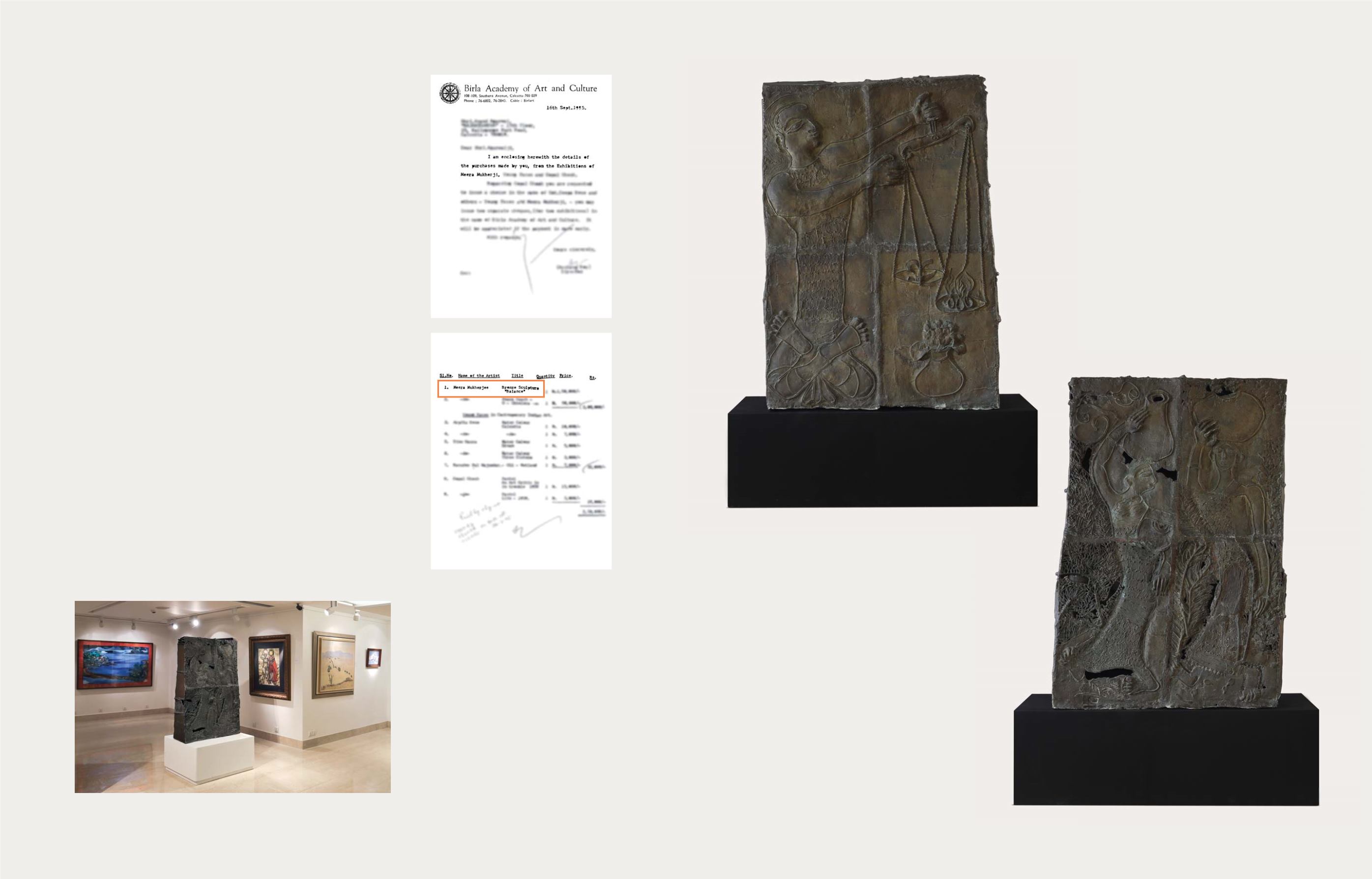

66
67
30
MEERA MUKHERJEE
(1923 ‒ 1998)
Balance
Bronze
Height: 53.75 in (136.3 cm)
Width: 37 in (93.7 cm)
Depth: 13 in (33 cm)
Rs 3,75,00,000 ‒ 4,50,00,000
$ 595,240 ‒ 714,290
Four‒sided rectangular sculpture with figures in relief on two sides
Side a has male figure with weighing scale
Side b has female figures
PROVENANCE:
Important Corporate Collection, Kolkata
EXHIBITED:
Birla Academy of Art and Culture, Calcutta, 1995
Side a Side bThe present lot is a monumental four‒sided sculpture composed of cast
bronze panels in
bas relief
. Among the largest of Mukherjee’s non-public
sculptures, the two main sides are made of smaller sections joined together.
One side shows a man seated cross-legged, holding a weighing scale, or
balance. On the opposing side, two women are seen walking amid foliage,
balancing pots on their heads, a rural scene Mukherjee would have seen
often during her extensive travels across India. Mukherjee captures a multi-
layered juxtaposition between female and male,
prakriti
and
purusha
,
nature and justice or rationality, in her title:
Balance
. An artist committed
to social causes and her own cultural and artistic roots, Mukherjee offers
here, a multitude of nuanced interpretations to the notion of “balance” as
an intellectual ideal. In 1995, this work was included in an exhibition at the
Birla Academy of Art and Culture in what was then Calcutta, and acquired
by an eminent collector.
Deeply interested in traditional sculpting traditions, Mukherjee travelled
across India in the 1960s and 1970s, learning about metal-working
techniques while compiling reports for her book,
Metal Craftsmen of India
.
During this time, she apprenticed with Bastar sculptors in Madhya Pradesh,
where she learnt the Dhokra method of casting—also known as
cire perdue
or lost wax—a technique that has existed in India for nearly 4,500 years.
Mukherjee eventually invented her own sculpting process, first creating her
work in wax, then building it up and adding surface decoration using wax
strips and rolls. The present lot is an ambitious work for Mukherjee, who is
best known for such smaller scenes of rural life. Mukherjee finds here, the
perfect balance between the delicacy of her fine sculpting technique and
the weightiness of large, cast bronze panels.
Mukherjee’s sculptures, whether smaller, fine filigree rural scenes, Baul
singers, or large public sculptures, all have a common humanism. As
seen in the present lot, she offers realistic scenes of the dignity of human
endeavour to evoke a higher meaning to our existence.
“Sculpture thus becomes
a complete, total process.
It is like nurturing and
nourishing, like making
a human being and
bringing him to life.”
MEERA MUKHERJEE
Original invoice from the Birla Academy of Art and Culture
Present lot at the Saffronart gallery, New Delhi


















